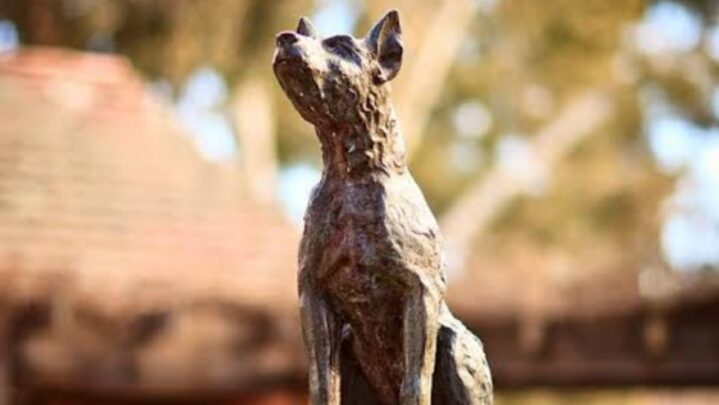The Dog on the Tuckerbox is a little sculpture based on the legend of a mythological bullock driver’s dog who guarded his owner’s lunch in “Bullocky Bill,” a classic Australian ballad. In Australia, lunchboxes are known as tuckerboxes. A bullock is the Australian term for an ox.
The Dog on the Tuckerbox mythology dates back to the 1850s, when explorers and pioneers passed through the area.
Supplies were delivered from Sydney in bullock-drawn waggons. Because there were no proper roadways, journeys were sometimes delayed due to the difficulty of crossing rivers and creeks, or because wagons were trapped. If the bullockies had to leave their waggons to seek help, their dog would sit calmly and protect the wagon and supplies until they returned. While waiting for the water levels in a river to drop or for assistance to arrive, the bullockies would recite and compose stories, poetry, and songs to pass the time.
The humorous poem “Bullocky Bill” was composed by someone named Bowyang Yorke, who was most likely a bullocky, and it was about bullocky misfortunes. Bowyang Yorke’s true identity is unknown. In the 1937 song “Where the Dog Sits on the Tuckerbox,” Jack O’Hagan immortalised the story of the Dog on the Tuckerbox. A dog statue dating from the 1800s may be seen nine miles (14 kilometres) from Gundagai. A spot nine kilometres outside of Gundagai is the subject of the poem. Prime Minister Joseph Lyons dedicated the current statue in 1932 as a tribute to pioneers.
It’s 7 kilometres outside of Gundagai, along the Hume Highway near Snake Gully, which villagers thought was a better location to attract visitors at the time.
Also Read: 5 Most Beautiful Reefs In The World





